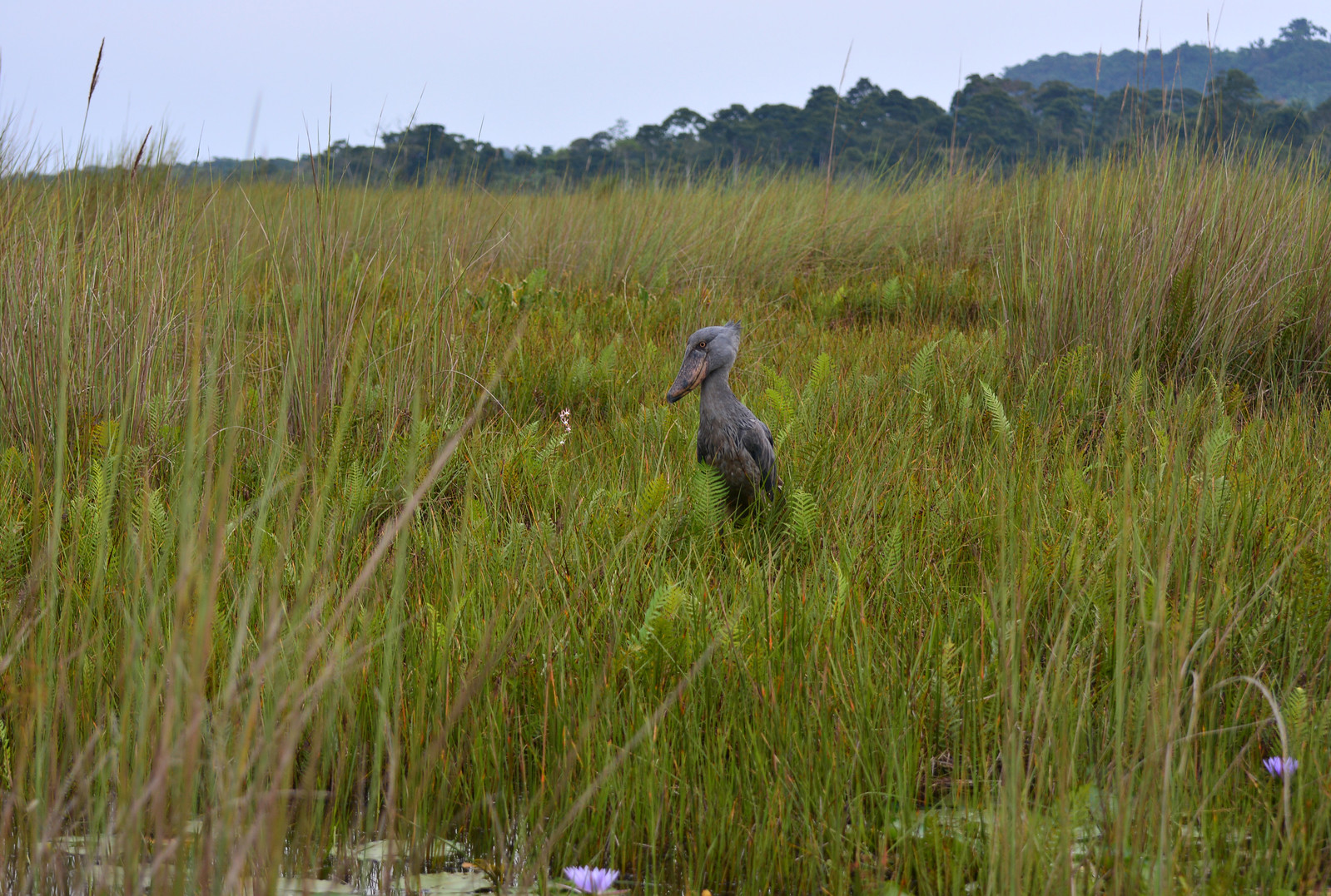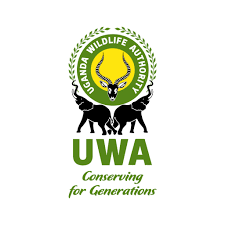Bird Watching at Mabamba Swamp Wetlands | Discover Uganda’s Shoebill Paradise
On the northwestern shores of Lake Victoria, just a short drive from Entebbe, lies a haven for bird lovers — the Mabamba Swamp Wetlands. This lush, papyrus-fringed wetland is one of Uganda’s premier bird watching destinations, famous for being one of the best places in Africa to spot the elusive Shoebill Stork.
A visit to Mabamba is a journey into stillness and wonder — where narrow canoe channels weave through emerald papyrus, the air hums with bird calls, and every turn offers the promise of a rare sighting. For both avid ornithologists and casual nature lovers, bird watching here is a must-do experience when exploring Uganda’s wildlife treasures.
The Beauty of Mabamba Wetlands
Located about 50 kilometers from Kampala and 13 kilometers west of Entebbe, the Mabamba Bay Wetland is part of the larger Lake Victoria Basin, designated as a Ramsar Wetland of International Importance for its role in supporting biodiversity and local livelihoods.
The swamp is a mosaic of papyrus reeds, water lilies, and open lagoons, forming the perfect ecosystem for both resident and migratory bird species. Its proximity to Entebbe makes it a convenient yet authentic introduction to Uganda’s incredible avian diversity.
But what truly draws travelers from around the world is the chance to see one of Africa’s most iconic birds — the Shoebill (Balaeniceps rex).
The Star of the Show: The Shoebill Stork
Standing over four feet tall, with a massive shoe-shaped bill and prehistoric appearance, the Shoebill is one of the most sought-after birds in the world. Its calm, statuesque posture and piercing eyes give it an almost mystical presence.
Mabamba Swamp is one of the few remaining strongholds of this rare species, with consistent sightings throughout the year. Unlike many other wetlands, Mabamba’s open channels make it possible to observe the shoebill at close range — often just a few meters away — as it stands motionless, waiting to ambush its favorite prey: lungfish.
Spotting a shoebill in the wild feels like stepping into another era, where nature’s mysteries unfold in their purest form.
The Bird Watching Experience
Setting Out on the Canoe Safari
Bird watching in Mabamba begins early in the morning, when the light is soft, and the swamp is most active. Visitors board small, wooden canoes paddled by experienced local guides who know every hidden channel of the wetland.
As you glide silently through the papyrus, the stillness is broken only by the rhythmic sound of paddles and the calls of birds echoing across the water. The guides — many of whom are members of local birding associations — are expert spotters, pointing out even the most camouflaged species.
The shoebill is often the highlight, but the swamp hosts over 260 bird species, offering a spectacular diversity of sightings.
Birds Commonly Seen at Mabamba
Alongside the shoebill, bird watchers can expect to see:
-
African Jacana – gracefully walking on lily pads
-
Malachite Kingfisher – a flash of blue and orange darting across the water
-
Papyrus Gonolek – a striking black and red bird endemic to papyrus wetlands
-
Pied, Giant, and Woodland Kingfishers
-
African Pygmy Goose
-
Purple Heron, Squacco Heron, and Goliath Heron
-
Yellow-billed Duck and White-faced Whistling Duck
-
Blue-breasted Bee-eater
-
Long-tailed Cormorant and Little Egret
During the migratory season (November to April), the wetland also welcomes species from Europe and Asia, adding even more color and song to the experience.
Duration and Timing
The canoe safari typically lasts 2 to 3 hours, though keen birders can easily spend half a day exploring. Early morning (6:30–9:00 a.m.) and late afternoon (4:00–6:00 p.m.) offer the best lighting and bird activity.
Getting There
From Entebbe:
Mabamba is easily accessible via a 1-hour drive from Entebbe town through Kasanje. Alternatively, visitors can take a scenic boat ride across Lake Victoria to the Nakiwogo landing site, followed by a short drive or boda-boda ride to the swamp entrance.
From Kampala:
It takes approximately 1.5 to 2 hours by car via the Kampala–Entebbe Expressway and Kasanje Road. Many tour operators offer day trips that include transportation, entrance fees, and guide services.
What to Bring
-
Binoculars and a good camera with zoom lens
-
Lightweight clothing in natural colors
-
Sun hat, sunglasses, and sunscreen
-
Insect repellent
-
Waterproof shoes or sandals (the boats can get damp)
-
Drinking water and light snacks
Conservation and Community
Mabamba’s success as a birding destination is rooted in community-based conservation. Local fishermen and residents have become passionate protectors of the wetland, guiding tourists and helping monitor bird populations.
Tourism revenue supports local livelihoods, schools, and environmental education — ensuring that the swamp continues to thrive as both an ecological sanctuary and a sustainable source of income.
The site is managed in collaboration with the Mabamba Wetlands Eco-Tourism Association (MWETA), which promotes eco-friendly tourism and conservation awareness among residents.
When to Visit
Mabamba can be visited year-round, but the dry seasons (June–September and December–February) offer easier navigation and better visibility. The wet seasons (March–May and October–November) bring lush vegetation and more migratory species, though some trails can become muddy.
Extend Your Birding Adventure
After exploring Mabamba, bird enthusiasts can extend their journey to other top birding destinations in Uganda, such as:
-
Entebbe Botanical Gardens – ideal for forest and lakeshore species
-
Mabira Forest Reserve – near Jinja, with over 300 bird species
-
Queen Elizabeth National Park – home to savannah and wetland birds
-
Bwindi Impenetrable Forest – famous for Albertine Rift endemics
A Morning in Nature’s Cathedral
A bird watching trip to Mabamba Swamp Wetlands is a gentle adventure — quiet, soulful, and unforgettable. It’s a place where you feel time slow down as you glide through green corridors of life, surrounded by the songs and movements of birds that call this wetland home.
And when you finally lock eyes with the shoebill — ancient, majestic, and motionless against the papyrus — you’ll understand why Mabamba is not just a birding site, but a sanctuary of wonder.





